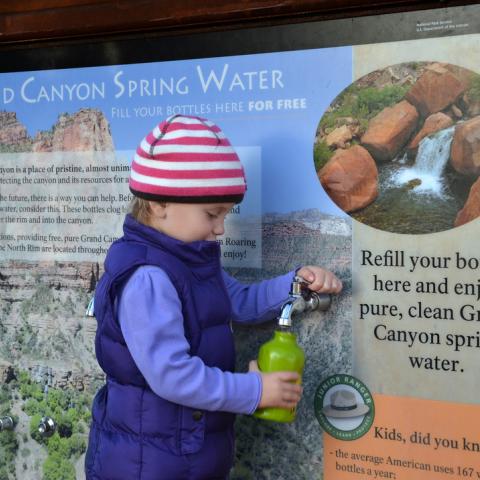
Grand Canyon wildlife biologists will collar some elk on the South Rim of the national park to track their movements/NPS, Michael Quinn file
Grand Canyon National Park wildlife biologists will be putting GPS collars on ten adult elk between late August and October of this year to gather movement data of the elk at the park's South Rim. The GPS collar information will be used to help draft an elk management plan.
Biologists will monitor the elk for two years to better understand their movement and interaction with visitors and residents within the South Rim Village. The collar data will allow the biologists to determine what areas in the park elk may be attracted to, and how they move around the village seasonally.
All of the elk selected for this project weigh at least 300 pounds. The collars weigh two pounds, less than 1 percent of the elk's weight, and they don't harm the animal in any way. The collars drop off of the elk after two years, so the ungulates will not be recaptured to remove the collar.
Though not native to the South Rim, elk are commonly found in the park and have become comfortable foraging and moving among people and developed areas within the village. As a result, elk and people often come too close, which can result in dangerous situations and negative outcomes.
Biologists have gained some knowledge of what the elk are attracted to and where they spend time within the village, but do not have a complete picture of how they move on a seasonal and annual basis.




 Support Essential Coverage of Essential Places
Support Essential Coverage of Essential Places







Comments
Elk can have serious impacts on vegetation even where they are native:
https://www.nps.gov/rlc/continentaldivide/upload/elk_herbivory.pdf
Hopefully, this Grand Canyon elk management plan includes long-term exclosures to quantify impacts. I'd expect these large exotic herbivores will eventually be removed, just as other introduced species are being removed from Olympic and Big Bend.
Working all last summer at Mather Point, the only "negative outcomes" I personally saw occurred when visitors -- through ignorance, stupidity or malice -- ventured too closely to an elk. I saw parents actually trying to place their 3-4-5 year old children on an elk's back for a photo! Cows with calves are especially protective, and young bulls can get nervous and feisty if encircled by humans....so do I, for that matter. For all that they seem unconcerned while crossing paths with humans, elk are wild animals after all and need to be treated accordingly. SPECIAL NOTE: Guy who taunted the bison in Yellowstone recently, you're lucky you ended up in jail for 130 days instead of six feet under forever.